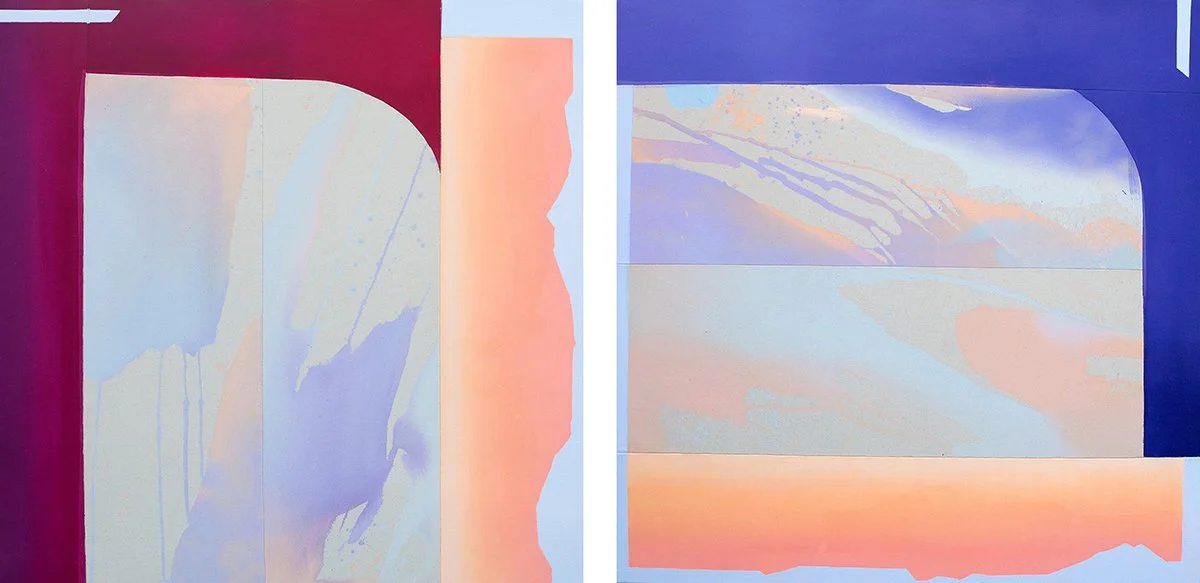All by José Antonio Arellano
Before crossing the curtain that separates the darkened room exhibiting Na Mira’s Hotel from the rest of the Colorado Springs Fine Arts Center, I could hear a song playing from within the gallery. It sounded vaguely familiar, at the edge of my recognition and memory. Experiencing Hotel felt familiar and new, like watching a sci-fi movie from the 1980s—both outdated and prescient, anachronist and transformative. This impression was due in part to the video medium and Mira’s allusion to the postmodern building designed by John Portman, Jr.: the Bonaventure Hotel.
I knew I would make the pilgrimage to the Museum of Art in Fort Collins when I heard that Tony Ortega had curated an exhibition there. Comprising the work of thirty-six artists from Colorado and New Mexico, the exhibition invites its viewers to consider the continued relevance of the Nahuatl term “Nepantla,” which Gloria Anzaldúa helped circulate in 2002.
Guest curator Valerie Hellstein had her work cut out for her with the exhibition Dialogue and Defiance. The exhibition tries to qualify Clyfford Still’s notorious “defiance” of the artworld by emphasizing the “dialogue” between him and his contemporaries—those who came to be called the Abstract Expressionists. Still, though, would no more have admitted to having been in dialogue with his peers than he would have wanted an art critic to review his paintings.
February’s show at Surface Gallery in Old Colorado City demonstrates what is possible when women revive a breakaway legacy of modernism. The show, titled Five, groups together the painters Becca Day, Tara Kelley-Cruz, Valerie Lloyd, Jes Moran, and Diane Reeves.
Since 1986, Emanuel Martinez’s mural titled Arte Mestiza has greeted visitors to the Colorado Springs Fine Arts Center. Last year, a grant by the National Endowment for the Arts enabled Martinez to restore and protect the work. Freely available to the public, this significant mural reminds us of the contributions of Spanish, Indigenous, Mexican, and Mexican Americans to the stories we tell about the histories of art.
I want to invoke metaphors of geological time to describe the sense of temporality invoked by Martha Russo’s exhibition at the Ent Center for the Arts. Apart from the pandemic-related interruptions that delayed its possibility, the nature of the work itself is accumulative, labor and time-intensive. With this exhibition—titled caesura, on view until December 2— the Gallery of Contemporary Art (GOCA) proves itself as a site committed to advancing what could be possible in the arts in Colorado Springs.
Like tourists embarking on a Pacific excursion, visitors of the newly reopened Arts of Oceania gallery at the Denver Art Museum are greeted by plastic leis. Whereas the kitschy garlands that adorn vacationing travelers adhere to advertised paradisal fantasies, the hundreds of synthetic leis of this installation gather to form a more dismal image—that of an imposing mushroom cloud. The exhibition Islands Beyond Blue: Niki Hastings-McFall and Treasures from the Oceania Collection confronts the visitors’ learned vocabulary and expectations and exposes the (mis)understanding these can produce.
For well over a decade, Joel Swanson has explored how language and technology structure our lives. His work has appeared in the Denver-land area, not to mention the Venice Biennale. As part of the entrepreneur Nicholas Pardon’s New Collection, a project-based arts initiative, artists Amber Cobb and Mario Zoots prompted Swanson to create the pieces that make up the current exhibition. The Distance Between Words is on view at Pardon’s private gallery The Vault.
Action/Abstraction Redefined, on view at the Colorado Springs Fine Arts Center, offers a visual lesson in art history. It is part of the ongoing reexamination of the stories we tell ourselves about our collective past. The show’s title asks us to reconsider how art historical terms, such as “Action Painting” and “Abstract Art” achieve traction and how institutions, including museums and galleries, help establish and distribute definitions. This exhibit features over 50 pieces, mostly paintings, by Native American modernist artists working from the 1940s through the 1970s. Many of the artists were associated with the Institute of American Indian Arts (IAIA) in Santa Fe.
In elin o’Hara slavick’s solo exhibition Dark Archive at the University of Colorado, Colorado Springs (UCCS) Galleries of Contemporary Art (GOCA) Downtown, each colorful drawing corresponds to a site bombed by the U.S. The cyanotypes are made by the shadows of radiated objects that were hit by the atomic blast in Hiroshima—objects now preserved in the Hiroshima Peace Memorial Museum. slavick’s strategy is to create visually arresting work that draws us in while simultaneously pointing to something outside itself.











